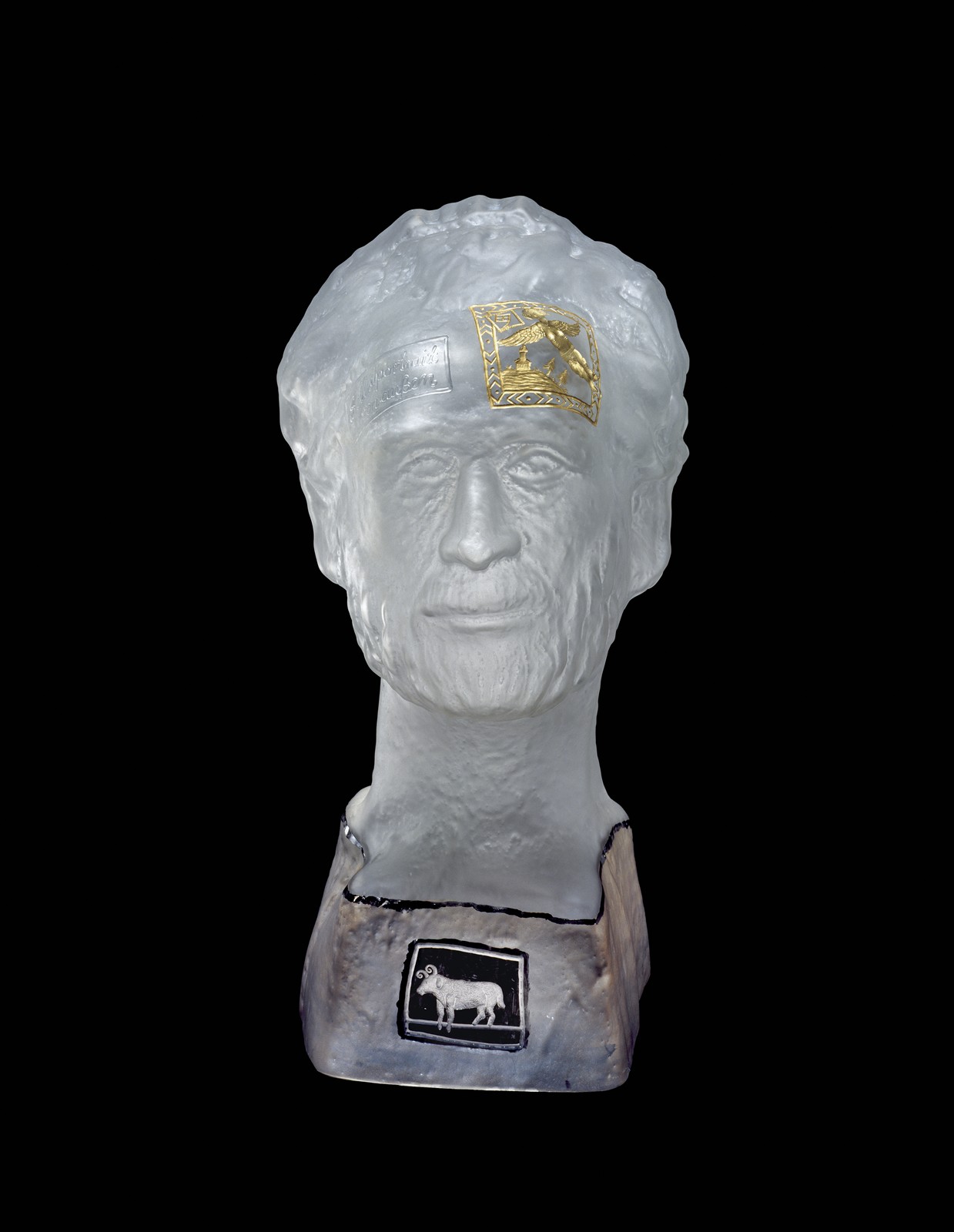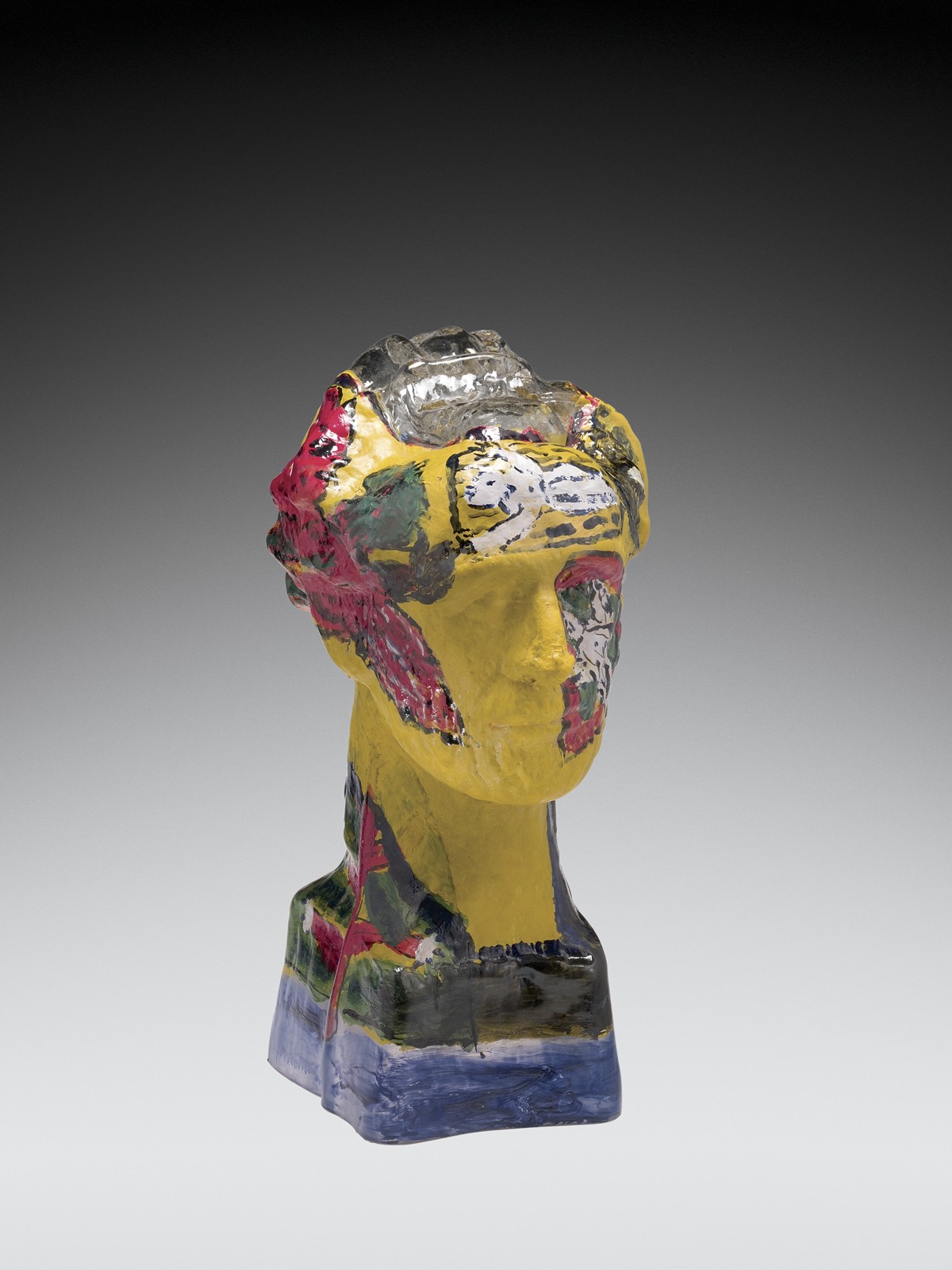Erwin Eisch (German, b. 1927) uses color to represent psychological complexity and depth. Colorless glass, on the other hand, is used to represent blankness, an absence of emotion, conformity. In Self-Portrait from the Outside, Eisch gives us his impression of how he is seen by society. His features are unclouded and straightforward. He brands himself as a creative person, perhaps, with a small gilt figure on his forehead, but otherwise, his head is colorless.

Self-Portrait from the Outside, Germany, Frauenau, 1997. Mold-blown glass, enameled, engraved. Overall H: 47 cm, W: 23.2 cm, Diam: 30 cm (2000.3.59).
Contrast this portrait with the vivid Self-Portrait that is covered in yellow enamel and the whimsical figures commonly found in Eisch’s painting. This is the opposite of the person seen “from the outside.” This is a personal portrait “from the inside,” revealing Eisch as he truly is, a person with many, often conflicting, thoughts and feelings.

Self-Portrait, Germany, Frauenau, 2002. Mold-blown glass, enameled. Overall H: 49 cm, W: 23 cm, Diam: 30 cm (2008.3.27).
“I feel a kind of love/hate for the material,” Eisch says. “With the help of glass, I want to express my innermost feelings and let my silent conflicts become visible. I also want to influence the viewers and try to start some kind of dialogue with them.”
Eisch is a close friend of American Studio Glass founder, Harvey K. Littleton (American, b. 1922), and had a profound influence on the development of American, as well as European, studio glass. His works are tradition-breaking, and his radical thoughts about art reflect the unorthodox approach to glass that has characterized his work throughout his career.
Don’t Miss: Masters of Studio Glass: Erwin Eisch is on view in the Museum’s Contemporary Glass Gallery through February 3, 2013.
The Corning Museum of Glass is open daily from 9am to 5pm, kids and teens (19 and under) receive free admission.
